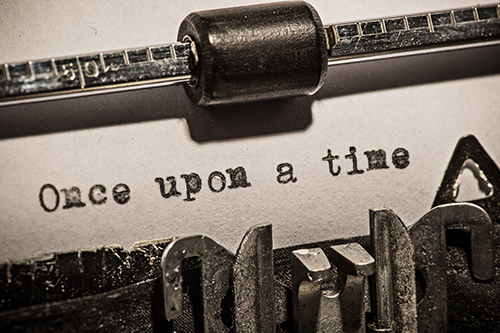Table of Contents
GETTING PUBLISHED!
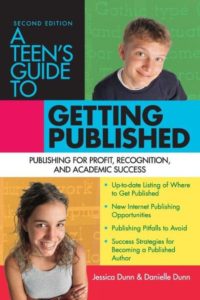
|
By Jessica Dunn and Danielle Dunn, A Teen’s Guide to Getting Published (Prufrock Press, 2006) covers the writing craft, freelance publishing (including how to prepare submissions and what you should know about rights and copyright), feedback, and market venues. Appendices list writing camps and workshops, and book publishing opportunities. |
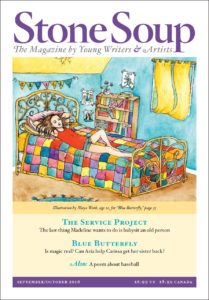
|
Stone Soup publishes stories, poems, and art by kids ages 8-13. Six issues are published each year. |
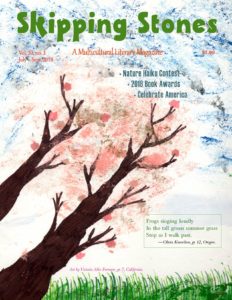
|
Skipping Stones is a multicultural literary magazine that accepts stories, essays, and poems from kids of all ages and languages. |
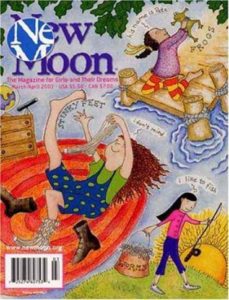 |
New Moon Girls – “by girls, for girls” – is written largely by girls ages 8-14. See the website for submission guidelines. Available either on paper or as an e-magazine. |
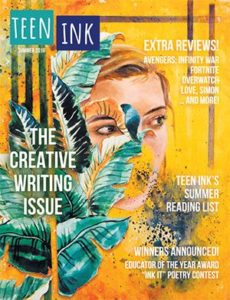 |
Teen Ink publishes articles, stories, poetry, art, and photos by teens, and sponsors numerous contests. |
| The Apprentice Writer publishes fiction, memoir, personal essays, poetry, and photography by high-school-level students. | |
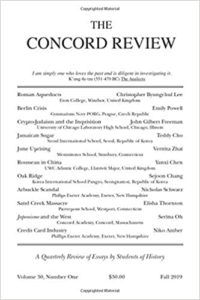 |
For the young non-fiction writer, The Concord Review, a quarterly history journal, is a highly respected publisher of academic essays by secondary students. Visit the website for instructions, sample essays, and the table of contents of the current issue. An annual subscription costs $40. |
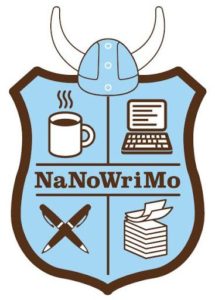 |
Nanowrimo stands for National Novel Writing Month, a literary marathon event during which all participating writers share the goal of completing an entire 50,000-word novel in the month of November. A subset of the program – the Nanowrimo Young Writers Program – is designed for K-12 groups or for writers ages 12 and under writing solo; in this case, total word count is left to teachers, parents, the group, or the individual kid. The benefits of Nanowrimo are said to be legion: among these are increased verbal fluency, self-confidence, and creativity, and an enhanced understanding of time management, since churning out a novel in a mere thirty days necessarily requires focus, scheduling, and dedication. |
| November is not just for fiction writers. WNFIN – Write Nonfiction in November – is an annual NaNoWriMo-type challenge to write a nonfiction book in 30 days. | |
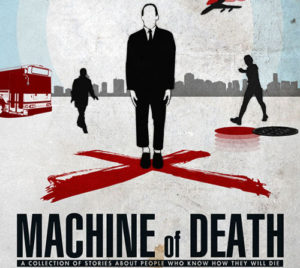 |
The Machine of Death (MOD) began as a writing contest that led to two books of collected short stories. The premise: a machine has been invented that can tell you, by taking a sample of your blood, just how you’re going to die. The machine gives you no specifics – simply generates a card printed with a single word or phrase (DROWNED, CHOKED ON A TACO, BURIED ALIVE). Now…write a story. Try it!
Now available as a game. |
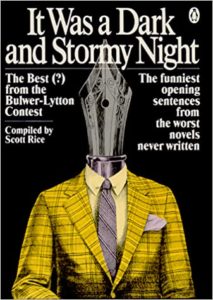 |
In the Bulwer-Lytton Fiction Contest, participants compete to write the first sentence of the world’s most dreadful novel. The contest is an annual event, with thousands of applicants, enthusiastic media coverage, and numerous subcategories, among them Adventure, Fantasy, Science Fiction, Children’s Literature, and Purple Prose. The rules for entry are described as “childishly simple”: applicants simply submit their awful sentence in an e-mail or via snail mail on an index card. Or your multiple entries: there are no limitations; contestants can submit as many awful sentences as they want. The annual deadline is April 15, but entries are accepted year-round. The BLFC website is targeted at teenagers and adults but the contest itself is potentially fun for a wide range of ages. |
| Also see the BLFC website for the truly dreadful sentence by Victorian novelist Edward Bulwer-Lytton that inspired the whole thing. It’s from the long-forgotten novel Paul Clifford, which begins “It was a dark and stormy night…” | |
| Scriblitt provides online tools with which kids can create and print their own illustrated story booklets, comics, and stationery. | |
| Storyjumper is an online site at which kids can create and edit books, using a variety of provided props and settings. Finished books can be shared online or printed. |
POEMS ABOUT WRITING
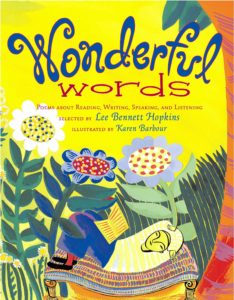
|
Compiled by Lee Bennett Hopkins, Wonderful Words (Simon and Schuster Books for Young Readers, 2004) is an illustrated collection of 15 poems about the joy of language in reading, writing, speaking, and listening by such poets as Emily Dickinson, Carl Sandburg, David McCord, Eve Merriam, and Karla Kuskin. |
| Charles Bukowski’s So You Want to Be a Writer explains when not to write: “If it doesn’t come bursting out of you/in spite of everything/don’t do it.” | |
| Richard Wilbur’s poem The Writer begins with his young daughter writing a story. |
